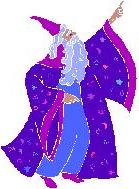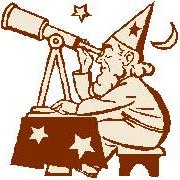Guest Post by Tristan Brand
As someone who spent seven years studying math, I’m interested in patterns. My favorite type of patterns are the unexpected ones. Seeing similarities emerge when previously you saw only differences is really neat.
Now, as much as I know you’re all hoping I’m going to spend the next thousand words discussing some very exciting developments in algebraic number theory, I’m going to apply this concept instead to myths.
One of the cool things about mythologies is how diverse they are, culture to culture. Though the Greeks, Norse, Egyptians, and Celtics all had their own pantheons of gods, each were different in their personalities, powers, and how they interacted with mortals.
From this diverse set of myths, we see patterns, similarities. Cultures whom never interacted with one another – who never even knew of the other’s existence! – came up with some of the exact same ideas. There’s a term for this; cultural universal. An idea that occurs in essentially every known human culture.
One of those cultural universals is shapeshifting.
Now, if I were to guess where these cultural universals come from, I’d conjecture they emerge from common human experiences. We’re all bipedal, two-armed, two-eyed omnivores. Surely that would have to lead to some similar developments. We all talk; we all walk; we all eat. What we don’t do is turn into wolves and run around in the night making trouble.
Yet, apparently, we all tell stories about exactly that.
Maybe this is less surprising than it seems. Humans’ connection with animals in the real world is as ancient as our myth. We’ve depended on animals to survive; dogs protected our homes, horses carried us through terrain we’d never survive on our own while oxen hauled our belongings; cows gave us milk and chickens gave us eggs. Even when animals aren’t doing our work for us, we’ve always kept them around for companionship. They had pet cats in ancient Egypt, who no doubt knocked over their fair share of cups of water and urns containing your ancestors organs.
This connection to animals seems to lead to a couple things. First, we begin to anthropomorphize the animals close to us. The trusty oxen you’ve used to haul your equipment for the past two years suddenly becomes Eddie. You start to ascribe moods to him as you would a human – happiness, sadness, boredom, anger. Maybe you even start talking to him, something I may or may not do with my own pets.
Second, we look at the traits animals have and wonder: what would it be like to run like a wolf? Smell the scent of your prey in the night? To swim like a fish. People have looked up at birds and wondered what it was like to fly for centuries before we ever developed the technology to do so.
But as the universe did not grant us such traits, so we did the next best thing: we imagined. We thought of men and woman transformed to these animal shapes. What would they experience? What would they see? What would they do?
We imagined, and we told stories. The Greeks told of Circe turning Odysseus’s men into pigs. The Celtics told of Llwyd ap Cil Coed, who transformed his wife and attendants to mice to eat the crops of rival Dyfed. The Norse told of the god Loki, who took the form of a mare to sabotage a man building a wall.
Shapeshifting is still prevalent in modern stories. Though shapeshifting itself is a shared idea among every culture, the way each individual storyteller handles it is different. It can impact a story in a thousand different ways.
One common approach is when then main character is unwillingly transformed into an animal. A classic example is in Roald Dahl’s novel The Witches, where the main character, a young boy, is turned into a mouse early on. Another, perhaps less known example, is The Dragon and the George by Gordon R. Dickson, where a man is transported to a fantasy world and transplanted into the body of a dragon.
Often in these stories, the main plot question becomes “How do they become human again?’ Additionally, we get to see the characters struggle with their new forms, learning new senses, new body parts. Other conflicts appear that would never matter to a human – like a mouse having to evade mouse traps, or a dragon having to deal with a new propensity toward freshly killed meat.
In other stories, the character controls when, and sometimes even what, they can change into. The wargs in George R. R. Martin’s Song of Ice and Fire series can project their mind into that of animals at will. The were-wolves in Jim Butcher’s Dresden Files series control when and how they turn into wolves.
Usually when shapeshifting is a choice, it becomes less of a plot question and more of a tool that the characters use in chase of the rest of the plot.
Another way shapeshifting changes in a story is how other characters within the story view shapeshifting. Is it considered a gift or a curse? Is it something that can be done openly or must it be hidden? The answers to these questions will help shape the world around your story, and make shapeshifting a natural part of that world. A great example of this is in Robin Hobb’s Tawny Man trilogy, where people with a power called the Wit can bond with animals – and even inhabit their bodies. The disgust others in story-world have toward this practice motivates a number of important plot points.
These examples only shallowly explore how shapeshifting affects stories. Every author has a different take on it. Some of them will resonate more than others, and will be read by our children and our children’s children and so on. Today’s stories slowly become tomorrow’s myths. I bet a thousand years from now, when humanity has travelled to the stars, they’ll still be telling stories about shapeshifting.
Maybe by then we’ll have even figured out how to shapeshift for real.
***
Tristan Brand is an aspiring fantasy author and technical writer. When he’s not obsessively checking the mail for his long-overdue invitation to wizarding school, he can be found playing StarCraft II, practicing classical piano, or reading a good book. He keeps a blog at www.TristanDBrand.com, does a web-show with his friend called Why We Like It (http://day9.tv/d/b/why-we-


